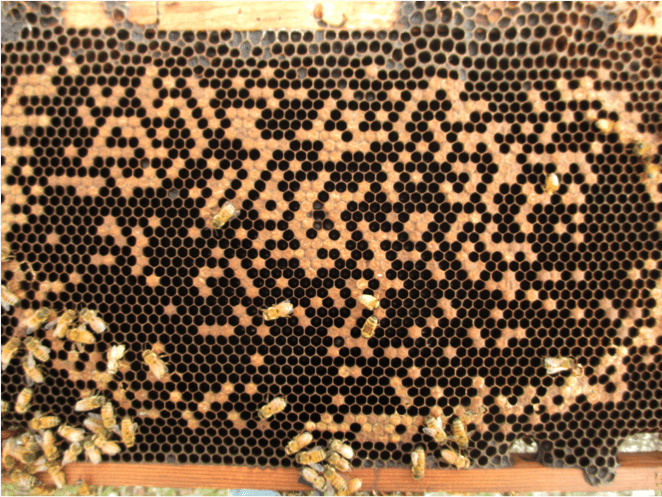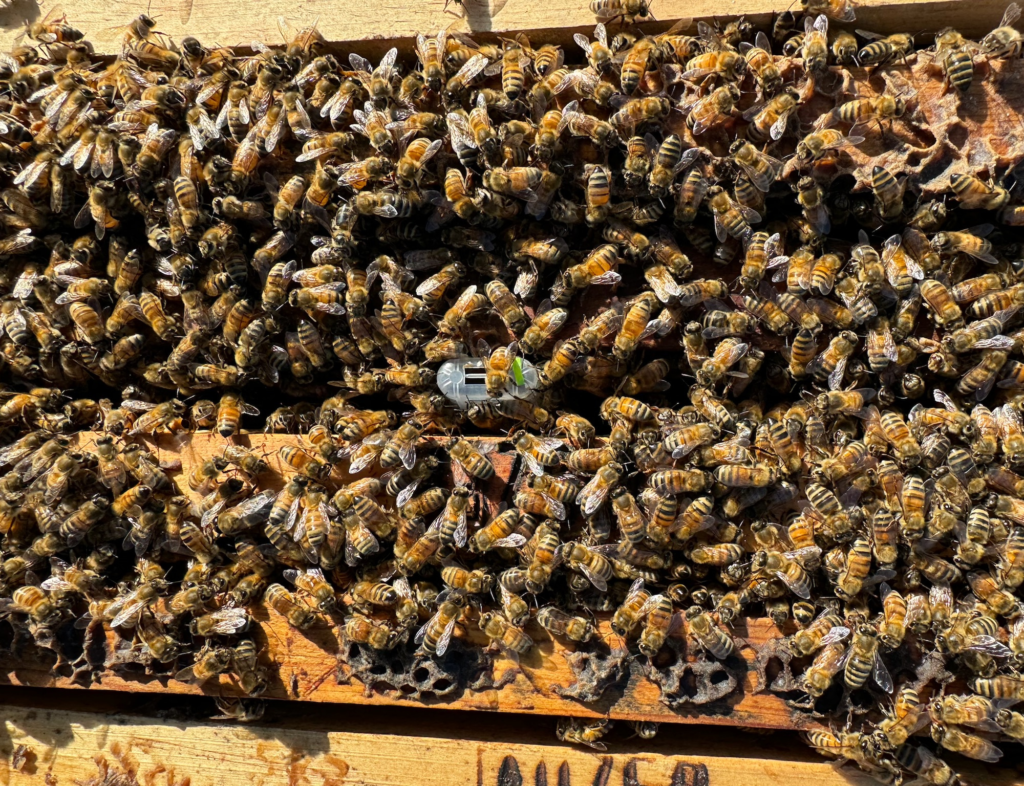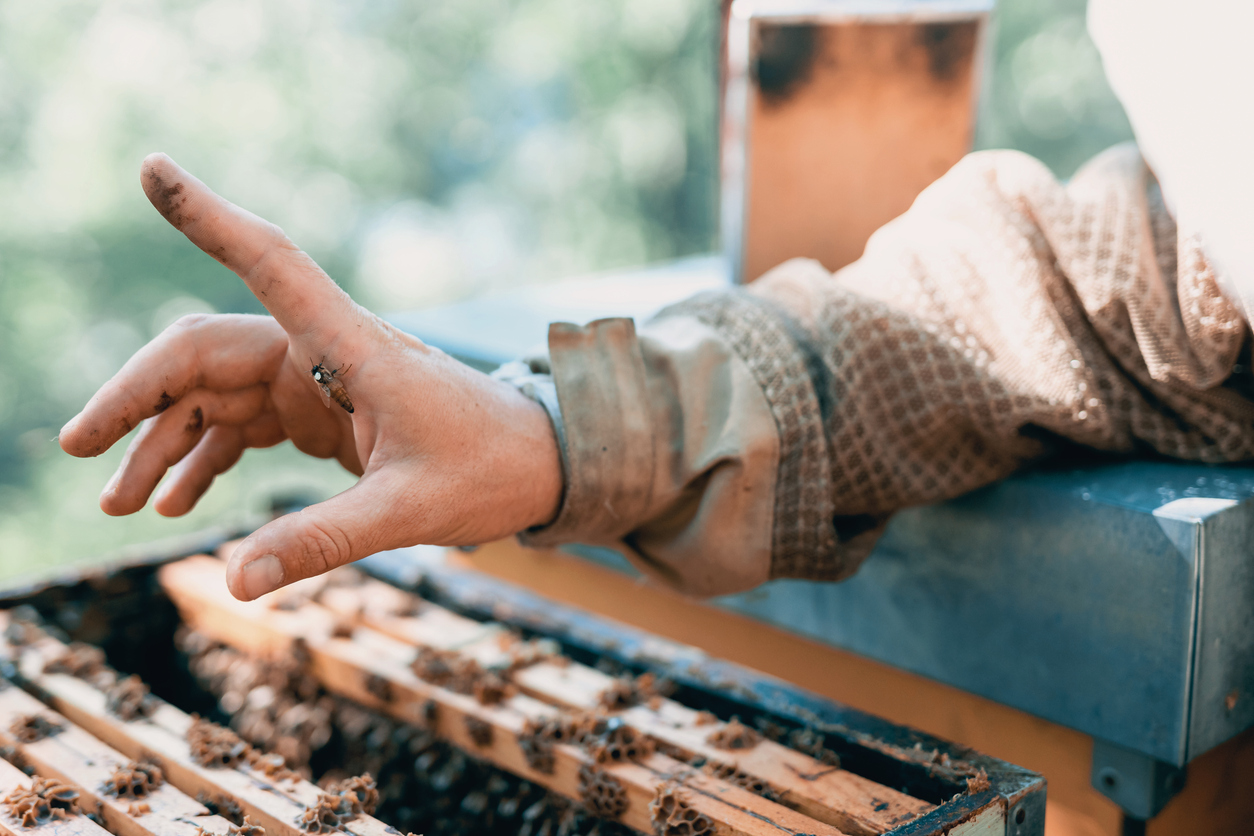Requeening is the process of replacing the queen bee in a hive to ensure colony health and productivity. A new queen can enhance genetic diversity, improve brood patterns, reduce brood diseases, and calm overly defensive colonies.
But how is it done, exactly? Read on to learn everything you need to properly requeen a hive, including tips on timing and monitoring.

Why Should You Requeen a Hive?
Part of every beekeeper’s job is to ensure their hives are sustained with a healthy, laying queen. Part of this continuous monitoring includes knowing why and when to requeen your hive(s). There are several reasons to requeen a hive:
Replacing an Old or Dying Queen
Over time, a queen bee will begin to underperform and decline its productivity, signalling the need to introduce a new queen to the hive. This will ensure the hive has a strong source for healthy and consistent brood, which is crucial for the colony’s growth and sustainability.
Genetics
Introducing a new queen can also change the genetic diversity of the colony, if you requeen with different genetics than your prior queen. Specific queen genetics can produce offspring with ideal traits, which can be different for every beekeeper depending on your area and climate.
Requeening may also improve the temperament of a hive. If a colony becomes too defensive or aggressive, a new queen with gentle genetics can help improve this behavior. This change generally becomes noticeable once the offspring of the new queen has replaced the older bees.
Other Indicators You Might Need to Requeen
Beyond the temperament and productivity of the hive, there are specific signs that indicate the need for a new queen. Spotty brood patterns, assuming brood disease and mite infestations have been ruled out, suggest that the current queen is not laying eggs consistently. Additionally, the presence of drone brood mixed in with worker brood, characterized by random large bumpy capped cells scattered throughout the flat capped worker brood, is another signal that requeening is needed.
Poor brood pattern
Good brood pattern


Image Source: Bee Informed
These are some of the key reasons to requeen a hive. Next, it’s important to understand the steps involved in the requeening process.
What Are the Steps Involved in the Requeening Process?
There are three important steps to follow when requeening a hive:
Removing the Old Queen
Unfortunately, requeening often involves removing the existing queen from the hive. This can be a difficult, but sometimes necessary step. It is advisable to remove the old queen from the colony 24 hours before installing the new queen.
Preparing the Hive
Cleaning and organizing the hive can reduce the amount of stress on the bees. Remove any debris or excess comb that might hinder the introduction of the new queen. Ensure there are no queen cells or virgin queens in the colony already, which might compete with your new queen.
Introducing the New Queen
The new queen must be introduced in a protective cage to prevent the bees from harming her while they adjust to her scent. A good way to do this is by positioning the queen’s cage between two top bars, ensuring the screened side isn’t facing the comb. Over the next several days, the workers will eat through the candy blocking the exit, eventually releasing the new queen into the hive.
Following these basic steps will help secure and healthy transition and a thriving colony.

Tips and Best Practices
After one week, it’s important to go back into your hive to see if the queen has been successfully released from her cage. If she has not, you can manually create an exit point in the cage by removing the sugar plug. After she has been released, check again after another week to see if she’s laying.
In addition to the information above, here are some general tips to help you through the requeening process:
How Late Can You Requeen a Hive?
You can requeen a hive whenever you see the need to and based on the condition of your colony. What’s important is that you do so during the warmer months for optimal results. According to the USDA, In 2023, 18% of honeybee colonies were requeened in the warmer second quarter, compared to 4% in the colder first quarter.
Monitoring
After introducing the new queen, avoid disturbing the hive for about a week, then check to ensure she has been released and is laying eggs. Destroy any supersedure cells to prevent the workers from replacing her. These practices help maintain a healthy and productive hive.
Where Can I Purchase Queen Bees This Season?
Learn more about our honey bee vaccine technology here. For healthy and productive hives, purchase vaccinated queens from a certified producer this season. Each offers Dalan’s vaccinated queens to protect your hives. Find a certified producer and purchase our vaccinated queens here.



